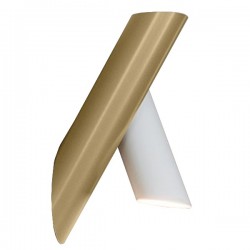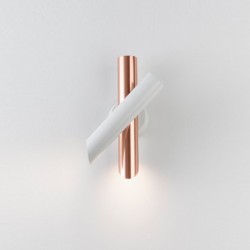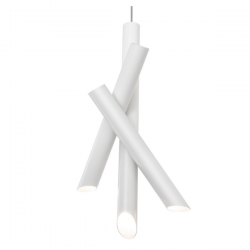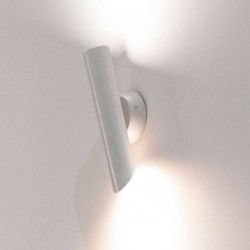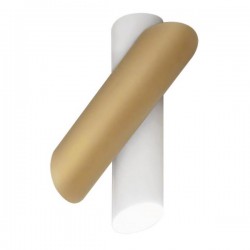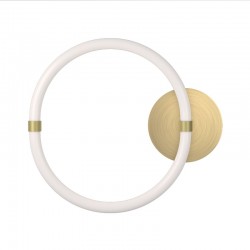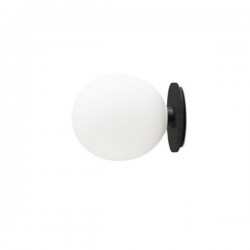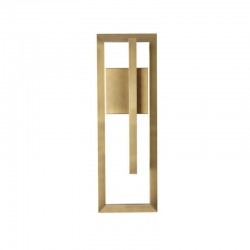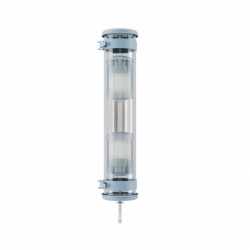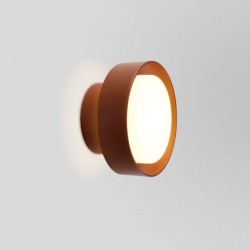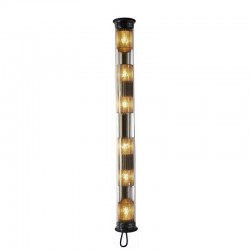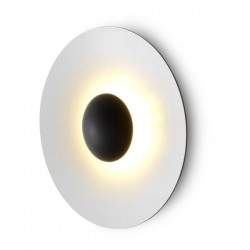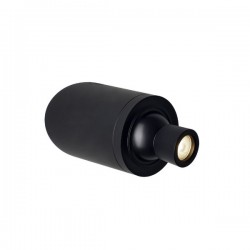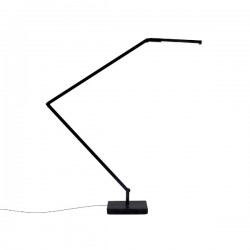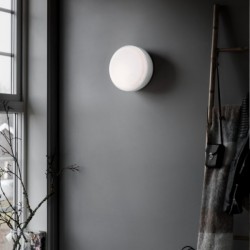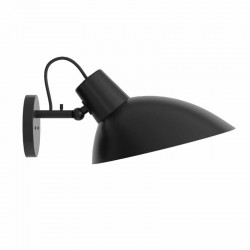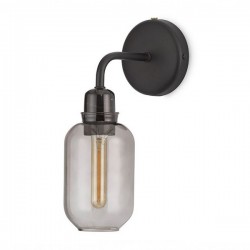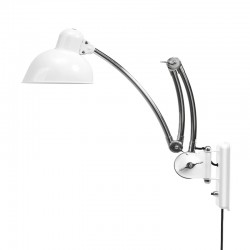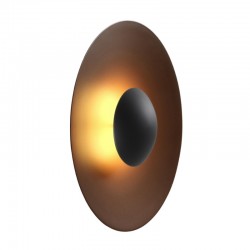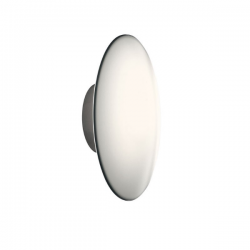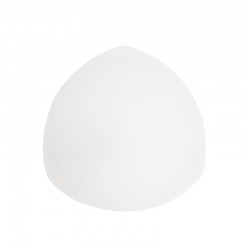Nemo Tubes Large Wall Lamp
Family of pendant, wall and ceiling lamps, with elements in extruded aluminium. Opal polycarbonate diffusers, for a warm and ambient lighting. Adjustable elements in the wall versions. Available also with dimmer push on the body of the lamp for the Wall 2 version
Ceiling version with a 340° rotation for the ceiling fixed element while the other element is adjustable by 90°.
- Specifications
LAMPING Source LED board
Total power 2x13W
Emission double, orientable, spot
Switching dimmable TRIAC
Tension 220V
Color temperature 2700K
Luminous flux 2 x 1200lm Typ cri 80
Materials aluminium
Notes one element orientable 60°, also available in 120V Codes Structure TTU LWD 31 white / grey TTU LWG 31 white/light gold TTU LWW 31 white/white
Kindly note that this product is CE-approved only and should only be used in countries that follow and accept this standard. If it is used elsewhere it will be at the customer's sole risk, responsibility and liability.
- Size Description
Ø7 x 23 x 31h.
-
Charles Kapalkian
Charles Kalpakian was born in 1982 in Beirut (Lebanon). Holder of a BTS Design Produit in 2004, he did a product design apprenticeship within the Ora-ïto agency before joining architects Leberre and Guillois as design assistant in 2005 and 2006. He collaborated with Frédéric Ruyant, ChafikDesign and VeniseWorkshop as a desi¬gner and interior designer. He then worked for the Christophe Pillet agency as a designer, then head of the design team, from April 2007 to July 2011. Charles Kalpakian is currently a freelance designer working on projects ranging from furniture, product design, decorative arts and scenography. In April 2011, he participated in the ‘Making of ’ exhibition in Milan organised by Meet My Project. The same year he collaborated with Darenart on a light and vase collection and on the design of the logo for the ‘Colette’ restaurant by Pierre Gagnaire for the Sezz Hotel in Saint-Tropez. In September 2011, as part of Paris Design Week at ‘Docks en Seine,’ he presented the prototype for a wall cabinet inspired by bistable perception, currently presented in a larger, more vertical version known as ‘Kinetism I’ by Galerie BSL (edition of 12 pieces). Charles Kalpakian’s design has three roots: France, Lebanon and the culture of Street Art. These influences are evi¬dent in the reinterpretation of certain motifs from the history of decorative arts (such as French marquetry), and iconic motifs from Lebanese history and geography (such as Lebanese cedar wood), filtered by urban and contem¬porary culture. The stroke is still clean, even if the gesture sometimes resembles writing or calligraphy.


 EUR
EUR



